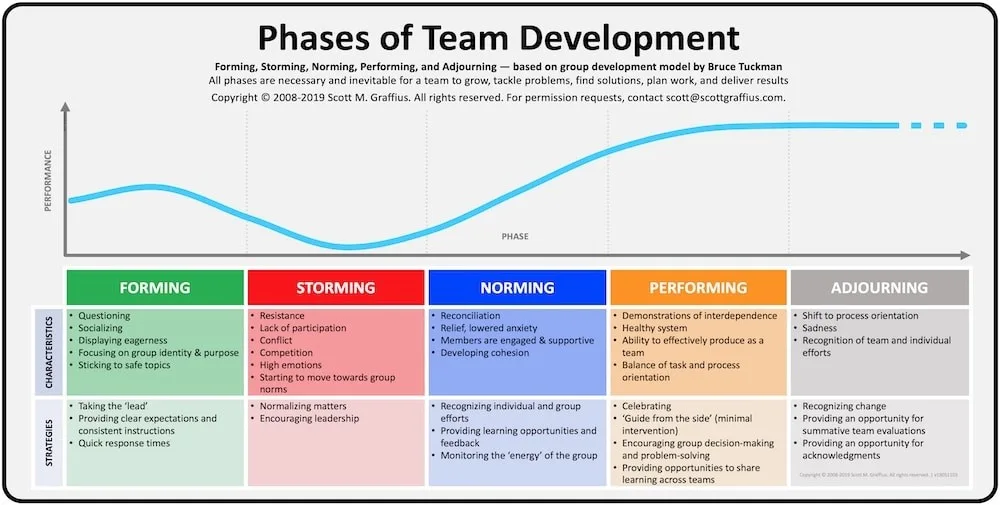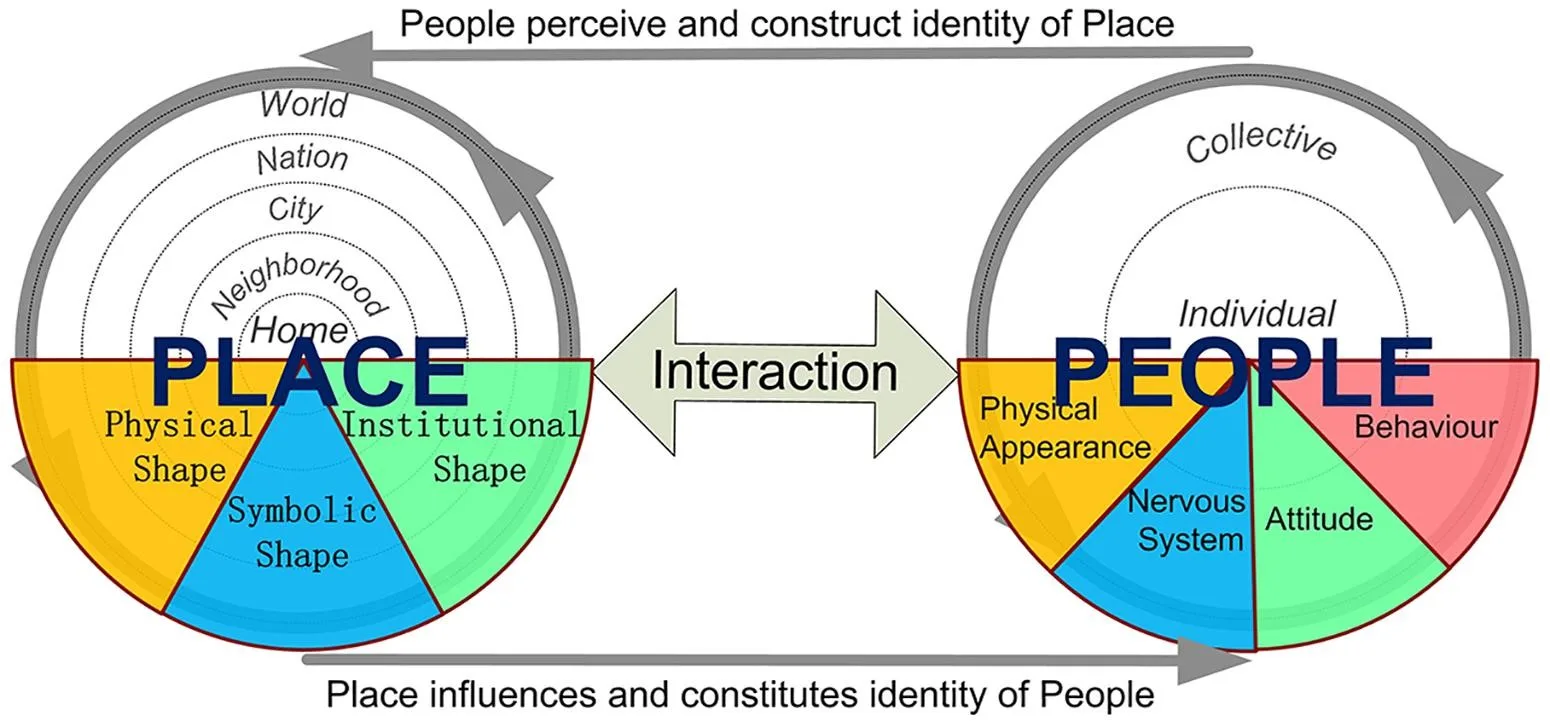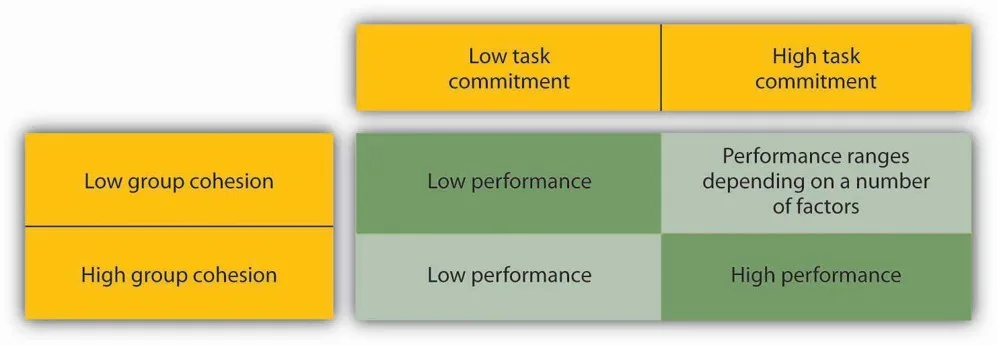
Introduction
The success of any team largely depends on how well its members interact and work together. Understanding group dynamics is crucial for effective teamwork and leadership. This article aims to delve into the psychology of group dynamics, its theoretical background, and practical applications in the workplace.
Group dynamics is a field of study that focuses on how individuals behave within a group setting. It explores the interactions, roles, and relationships that develop among group members. By understanding group dynamics, leaders and team members can build stronger relationships, improve communication, and enhance overall team performance.
Group dynamics can be understood through psychological theories.

Bruce Tuckman’s stages of group development
One of the key theories in group dynamics is Bruce Tuckman’s stages of group development. According to Tuckman, groups go through five stages:
forming, storming, norming, performing, and adjourning.
In the forming stage, members come together and get to know each other. This is often a polite and cautious phase where individuals try to establish their roles and boundaries within the group. As the group progresses to the storming stage, conflicts and disagreements may arise as members express their differing opinions and ideas. This stage can be challenging, but it is a necessary part of the group’s development. Through open and constructive communication, the group can move past the storming stage and enter the norming stage.
In the norming stage, the group begins to establish common goals and norms. Members start to trust each other, and roles and responsibilities become clearer. This is a crucial stage for building cohesiveness and fostering collaboration within the group.
Once the group reaches the performing stage, the members have developed a high level of trust and synergy. They work together efficiently towards achieving their shared goals. This is the most productive stage of group development, where the team can maximize their potential.
Finally, in the adjourning stage, the group disbands either due to completing their task or due to external factors. This stage allows members to reflect on their experience and acknowledge their achievements and growth as a team.
Understanding these stages of group development can help leaders navigate through challenges and facilitate the growth of their teams. By recognizing the dynamics at play, leaders can intervene when conflicts arise and encourage collaboration during the norming and performing stages.
In the workplace, the application of group dynamics is essential for fostering a positive and productive team environment. When team members feel heard, valued, and supported, they are more likely to contribute their best efforts. Effective communication, active listening, and conflict resolution skills are vital for creating a climate of trust and respect within the team. Furthermore, understanding group dynamics can also help in team building activities.
By promoting social interaction and encouraging team members to get to know each other on a personal level, leaders can enhance teamwork and collaboration. This can be achieved through team-building exercises, retreats, or even regular social gatherings. In conclusion, group dynamics is a critical aspect of effective teamwork and leadership.
By understanding the theoretical background and practical applications of group dynamics, leaders can create a positive and productive team environment. Through the stages of group development, teams can build trust, establish common goals, and maximize their performance. By investing in enhancing group dynamics, organizations can foster a culture of collaboration and achieve outstanding results.

The Social Identity Theory
Group identity plays a fundamental role in shaping human behavior, as individuals have an innate tendency to identify with various groups. This identification not only provides a sense of belonging and acceptance but also influences our attitudes, behaviors, and decisions.
Understanding the dynamics of group identity can shed light on societal patterns, conflicts, and even individual actions. From an early age, individuals begin to associate themselves with groups based on factors such as nationality, ethnicity, religion, or even hobbies and interests. These groups help to define our self-concept, contributing to a sense of identity and belonging. For example, someone growing up in a particular culture may acquire the language, traditions, and beliefs of that culture, strengthening their identification with it. Similarly, a person who passionately engages in a particular hobby or sport might join a community of like-minded enthusiasts, reinforcing their identity within that group.
Group identity can significantly impact our behavior, shaping our attitudes and actions towards both members and non-members of the group. Social psychologists have conducted numerous studies that illustrate how group identity influences behavior. In the famous Stanford Prison Experiment, participants were randomly assigned roles as guards or prisoners, leading them to adopt the behaviors associated with those roles. The experiment highlighted the profound impact of group identity on individual behavior, as participants quickly internalized their assigned roles and exhibited corresponding attitudes and actions. Moreover, group identity often leads to in-group favoritism and out-group discrimination. People tend to favor members of their own group, viewing them more positively and offering them more resources and support. On the other hand, individuals may exhibit prejudice, negative stereotypes, and even engage in discriminatory behaviors towards those outside their group. These biases stem from a psychological need to maintain positive self-esteem and protect our group’s social standing. Consequently, conflicts and tensions often arise between different groups, ranging from minor disagreements to large-scale societal divisions. However, it is essential to recognize that group identity is not inherently negative. It can also foster a sense of solidarity, cooperation, and collective action. In times of crisis or when facing common struggles, group identity can unite individuals, encouraging them to work together towards a common goal.
Activist movements, for example, often form around a shared group identity, as people join together to fight for justice and equality. These movements demonstrate the immense power of group identity in driving positive societal change. Understanding how individuals identify with groups and the subsequent effects on their behavior offers valuable insights into human social dynamics.
By recognizing the complexities of group identity, we can navigate the potential pitfalls of in-group bias and out-group discrimination while harnessing the positive aspects of collective action and cooperation. Ultimately, group identity plays a significant role in shaping our behaviors and interactions, influencing both individual actions and broader societal patterns.

The Group’s Cohesion and Conformity
Group cohesion plays a significant role in shaping human behavior and can often result in conformity within a group setting, inevitably impacting the decision-making process. When people are part of a cohesive group, they tend to prioritize maintaining harmony and consensus among members over expressing their individual opinions or questioning the group’s judgments.
This conformity phenomenon is deeply ingrained in human psychology and can be observed in various social contexts, such as organizations, educational institutions, or even social circles. Within a cohesive group, individuals often feel a strong sense of belonging and identification with the group’s goals, values, and norms. This sense of camaraderie fosters a desire to conform and go along with the majority opinion. It is human nature to seek acceptance and avoid rejection, making conformity an almost instinctive response in many situations. One prominent example of group cohesion leading to conformity is seen in jury deliberations.
When a diverse group of jurors comes together to decide the fate of a defendant, social dynamics come into play. Initially, each juror may have their own unique perspective and interpretation of the evidence. However, as deliberations progress, the natural tendency for group cohesion takes hold. Individuals who initially held differing opinions may gradually align themselves with the majority to avoid conflict or stand out from the group. The fear of being labeled as a dissenter or facing social repercussions can be strong motivators for conformity.
Consequently, the final decision reached by the group may not necessarily reflect each juror’s nuanced viewpoint but rather a compromise that satisfies the collective consensus. Moreover, group cohesion and conformity can have a profound impact on organizational decision-making processes. In a workplace environment, cohesive teams often exhibit a strong sense of unity and cohesion, which can be beneficial for cooperation and collaboration. However, this cohesion can also lead to a collective mindset where individuals hesitate to challenge the status quo or propose alternative ideas.
In such cases, decision-making may suffer from a lack of creative thinking or critical evaluation of options. Group members, fearing conflict or potential rejection, may refrain from expressing dissenting opinions or offering innovative solutions. This conformity-driven decision-making process can hinder organizational growth and impede the exploration of new ideas, potentially resulting in missed opportunities for improvement. To mitigate the negative effects of group cohesion on decision-making, it is crucial to cultivate an environment that promotes open dialogue, encourages diverse perspectives, and values individual autonomy.
Encouraging dissenting voices and embracing constructive criticism fosters a culture of intellectual curiosity and innovation. Additionally, incorporating techniques such as devil’s advocacy or assigning a designated “devil’s advocate” can aid in challenging groupthink and facilitating a more thorough evaluation of decision alternatives. In conclusion, group cohesion can significantly influence decision-making, often leading to conformity within a group. The desire for acceptance and the fear of rejection can impede individual expression and critical thinking, resulting in suboptimal decisions. Recognizing and actively addressing this phenomenon is essential for promoting a healthy decision-making process that embraces diverse perspectives and encourages innovation.

Practical tips for effective group dynamics
- Identify Group Roles
- Foster Open Communication
- Set Clear Goals
- Encourage Participation
- Manage Conflicts
- Evaluate and Adapt
What are your thoughts on group dynamics? Do you have any experiences or insights to share? Feel free to comment below!

Leave a Reply